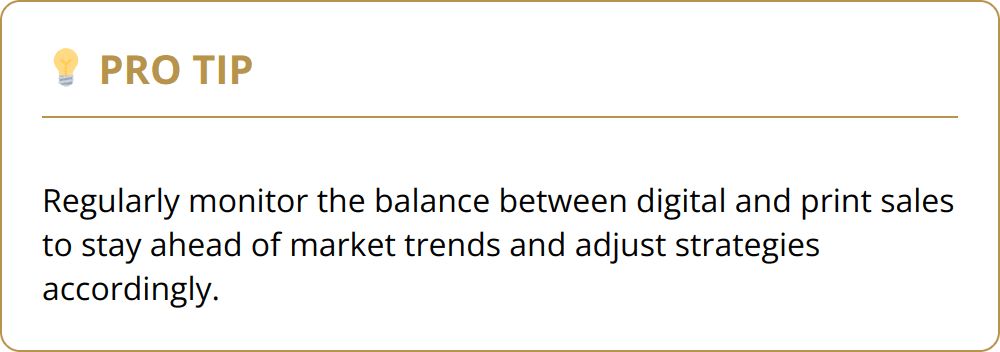The publishing industry is undergoing significant changes, driven by digital transformation and evolving reader preferences. At Beverly Hills Publishing, we’ve observed these shifts first-hand, particularly in the rise of self-publishing and the critical role of analytics for success. Understanding market trends, key performance indicators, and the impact of technology is essential for publishers navigating this landscape.
This guide aims to provide publishers with a comprehensive overview of the current state of the industry, emerging trends, and practical, data-driven strategies to thrive.
Analyzing Publishing Today
The publishing industry is currently witnessing a remarkable transformation. Fueled by digital technology, the market landscape is expanding, with notable growth in both the size and reach of the industry. The global book market, which is projected to increase in the coming years, is a testament to the industry’s resilience and adaptability. However, the real game-changer has been the digital transformation, reshaping how content is created, distributed, and consumed.
Digital platforms have democratized the publishing process, leading to an exponential rise in self-publishing and indie authors. This shift has not only enabled a wider array of voices to be heard but has also introduced new challenges and opportunities in the market. Traditional barriers to entry have been lowered, allowing authors to bypass traditional publishing houses and directly reach their audiences through digital formats and online retailers.
However, with opportunity comes competition. The market is now more crowded than ever, making it imperative for publishers and authors alike to understand and leverage analytics to stand out. Data analytics play a pivotal role in this environment, offering insights into reader preferences, market trends, and effective marketing strategies. By analyzing reader behaviour, publishers can tailor their offerings to meet the changing demands of the audience, ensuring content resonates and reaches its intended market.
Furthermore, data analytics enable publishers to predict future trends, optimizing their strategies for better engagement and profitability. From deciding which genres are gaining popularity to determining the best time to release a new title, analytics provide an evidence-based approach to decision-making.
Key Points to Consider:
- Digital technology has significantly expanded the reach and accessibility of the publishing industry.
- The rise of self-publishing has democratized content creation, introducing new challenges and opportunities.
- Leveraging analytics is essential for understanding market dynamics and optimizing strategies for engagement and profitability.

The rise of analytics in the publishing industry suggests a future where decisions are increasingly data-driven. Publishers and authors who adopt a data-centric approach will not only navigate the changing landscape more effectively but will also secure a competitive edge in the market. For practical insights on leveraging data analytics in publishing, exploring resources like our publishing trends can provide valuable guidance and examples of success in this evolving industry.
Tracking Publishing Success
In the evolving landscape of the publishing industry, pinpointing and understanding key performance indicators (KPIs) is vital for any publisher aiming for success. This chapter dives into the essential metrics that publishers should monitor to gauge performance and steer their strategies in the right direction.
Revenue and Sales Figures
At the core of any publishing business, revenue and sales figures hold the ultimate importance. They provide a clear indicator of market acceptance and the financial health of your publications. Track not just the total sales but also break them down by title, author, genre, and format. This granular view can reveal what’s resonating with your audience and where to focus your marketing efforts. For example, if a specific genre shows strong sales online but not in physical stores, it might indicate where your audience prefers to shop, guiding your distribution strategy.
Acquisition and Retention Rates
Understanding how well you’re attracting and keeping your audience is crucial. Acquisition rates for new readers and retention rates for existing customers must be monitored closely. High acquisition rates mean your marketing is effective, but without solid retention rates, you might be losing readers as fast as you gain them. Utilize email marketing campaigns, reader loyalty programs, and personalized content to boost retention. Successful publishers know that a retained reader is not just a source of ongoing revenue but a potential advocate for your brand. For insights on improving these rates, the article on effective book descriptions might offer valuable strategies.
Digital vs. Print Metrics
In today’s market, understanding the dynamics between digital and print sales is more important than ever. Track which formats are selling best and analyze trends over time. Are your digital sales increasing while print decreases? Or is there a resurgence in print that you can capitalize on? This data not only affects your inventory management but can also guide your publishing format strategies moving forward. Additionally, digital metrics can offer deeper insights into reader behavior, such as time spent on page or bounce rates, which can inform content and layout adjustments.

Actionable Tips:
- Regularly review sales by format and channel to adjust distribution strategies.
- Implement targeted retention strategies based on reader feedback and analytics.
- Compare digital and print trends quarterly to spot shifts in reader preference.
Monitoring these KPIs enables publishers to make informed decisions, adapt to market changes, and ultimately drive greater success. By focusing on the numbers that truly matter, publishers can optimize their offerings and ensure they meet the ever-changing demands of the market.
Harnessing New Analytics Trends
The landscape of publishing analytics is expanding rapidly with the adoption of advanced technologies like AI and machine learning. These tools are not just futuristic concepts; they are becoming indispensable for publishers aiming to stay ahead in a highly competitive market. By understanding and applying the latest trends, publishers can significantly enhance their decision-making processes, marketing strategies, and understanding of reader behavior.
Predictive Analytics: Shaping Future Strategies
Artificial Intelligence (AI) and machine learning are revolutionizing the way publishers predict future trends. By analyzing historical data and current market dynamics, these technologies offer valuable insights into which genres might surge in popularity next or what kind of content will resonate with readers in the future. This proactive approach allows publishers to align their publication schedules, marketing efforts, and content development with anticipated market demands, dramatically reducing the risk of unsold inventory and unengaged audiences.
Practical Tip:
- Invest in AI-driven analytics tools to forecast industry trends and plan your publishing calendar accordingly.
Deep Diving into Reader Engagement
Understanding reader engagement has moved beyond simple sales figures to encompass a detailed analysis of how readers interact with content. Analytics now can track how much time readers spend on eBooks, which chapters they linger over, and even which passages they highlight. This granular data provides publishers with insights into reader preferences and behaviors, enabling the creation of content that is more engaging and tailored to audience needs.
Recommendation:
- Use engagement analytics to refine content and enhance reader satisfaction.
Leveraging Social Media Analytics
Social media platforms are treasure troves of data, offering insights into reader demographics, preferences, and behaviors. Smart publishers are tapping into this wealth of information to fine-tune their marketing strategies. By analyzing likes, shares, comments, and hashtags related to their publications, publishers can identify which topics generate the most buzz and tailor their promotional strategies to capture the interest of their target audience more effectively.
Actionable Insight:
- Regularly review social media analytics to identify trends and adjust your marketing campaigns for maximum impact.

Emerging Trends:
- AI and machine learning for proactive publication planning
- Detailed reader engagement analysis for content optimization
- Strategic use of social media data in marketing
By staying abreast of these emerging trends and incorporating them into their analytics practices, publishers can not only increase their efficiency but also enhance their connection with readers. This strategic approach to data analytics ensures that publishers can anticipate market shifts, cater to reader preferences, and optimize their marketing efforts for maximum return on investment.
For more insights on optimizing content strategy through analytics, exploring resources like publishing trends can offer further guidance.
Final Thoughts
In the transformative landscape of the publishing industry, the surge in digital technology and reader analytics has unmistakably shifted how publishers approach the market. The key insights and performance indicators outlined demonstrate the critical role of data analytics in understanding and engaging with today’s and tomorrow’s readers. Revenue and sales figures, acquisition and retention rates, along with digital versus print metrics stand as pillars for gauging success in a highly competitive field.

The transition to a data-centric publishing model is not just necessary; it’s imperative for those aiming to lead in the evolving market. The future of publishing is undeniably intertwined with the strategic application of analytics to forecast trends, optimize content, and tailor marketing strategies to reader demands. This move towards evidence-based decision-making empowers publishers to not only meet but anticipate market shifts, ensuring relevance and sustainability.
We strongly encourage publishers to embrace data-driven strategies. Leveraging advanced analytics, including AI and machine learning, unlocks a deeper understanding of reader behavior and market dynamics. This isn’t just about survival—it’s about thriving. By harnessing the power of data, publishers can navigate the complexities of the industry with greater precision, agility, and confidence.
At Beverly Hills Publishing, we’re at the forefront of integrating publishing with strategic branding and marketing, employing data analytics to empower authors and publishers alike. Our approach ensures that authors not only achieve publishing success but also establish strong brand identities, becoming recognized leaders in their fields. This is a testament to the fact that in an industry as fluid and dynamic as publishing, the use of analytics is more than just beneficial—it’s essential for long-term success and impact.
For publishers ready to take their strategy to new heights, exploring resources and guidance offered by pioneers in the field can make all the difference. We invite you to learn more about how our integrated approach to publishing and marketing can elevate your success in this data-driven era. Discover our innovative solutions at Beverly Hills Publishing.
In wrapping up, the message is clear: the future of publishing is bright for those who are willing to adapt and innovate. By prioritizing analytics and data-driven strategies, publishers can ensure their place at the forefront of the industry, delivering content that resonates, engages, and leads the way in the digital age.















































































































































































































































